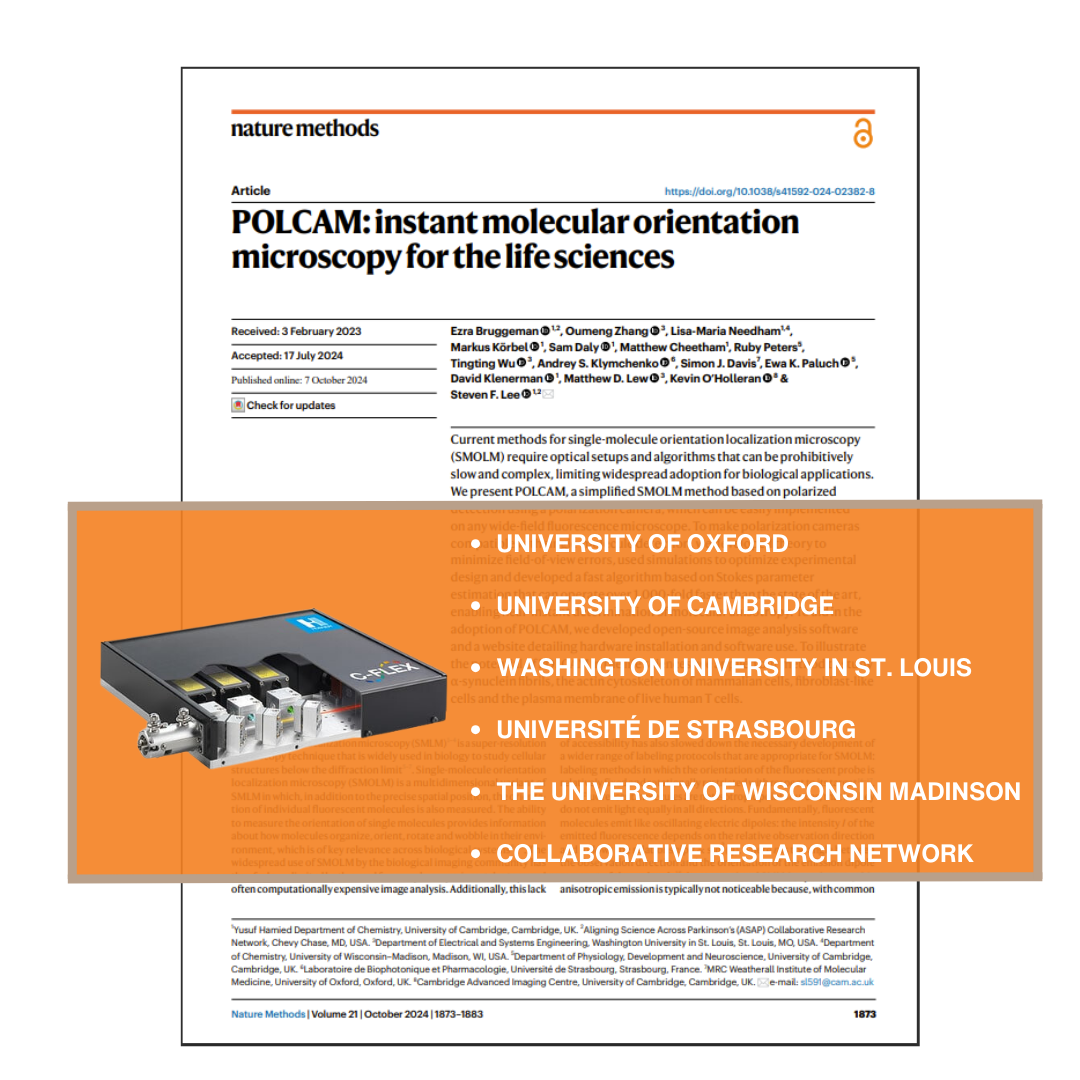POLCAM: A Novel Method in Molecular Microscopy
In a significant advancement for the life sciences, researchers have developed POLCAM, a novel method for single-molecule orientation localization microscopy (SMOLM). The study, published in Nature Methods, is the result of a cross-border collaborative effort between the following institutions: the Department of Chemistry at the University of Cambridge, Aligning Science Across Parkinson’s (ASAP) Collaborative Research Network, the University of Washington, the University of Wisconsin–Madison, Université de Strasbourg (France), The Department of Physiology, Development and Neuroscience at the University of Cambridge, MRC Weatherall Institute of Molecular Medicine at the University of Oxford and the Cambridge Advanced Imaging Centre.
POLCAM is an innovative technique meant to simplify the complex process of molecular orientation detection, making it more accessible for biological applications.
It utilizes a polarization camera that can be integrated into any wide-field fluorescence microscope. For the light source the group utilized the C-FLEX Laser Combiner with 405, 488, 515, 561 and two 638 nm lasers. This method allows for near-instant determination of molecular anisotropy (how molecules are oriented and how their properties change with direction), operating over 1,000 times faster than previous techniques. Traditional techniques for measuring molecular anisotropy are much slower, possibly taking hours or even days to produce results. POLCAM, on the other hand, can achieve this in a fraction of the time, making it significantly more efficient. In addition, the group developed an open-source image analysis software and detailed guides for hardware installation (avalable on GitHub and Zenodo).
To illustrate the potential of POLCAM in the life sciences, the group applied the method to examine specific biological structures and cells such as α-synuclein fbrils (protein aggregates associated with neurodegenerative diseases like Parkinson’s), the actin cytoskeleton of mammalian cells (a network of protein filaments that gives cells their shape and helps with movement), fibroblast-like cells (cells that produce collagen and other fibers; they play a crucial role in wound healing and tissue repair) and the plasma membrane of live human T cells (a type of immune cell important for the body’s defense against infections).
Overall, POLCAM has the potential to significantly enhance our understanding of molecular and cellular processes, leading to future breakthroughs in medical research and treatment, as well as fostering a more collaborative and innovative scientific community.
More resources
Looking for more in-depth information? Visit our Knowledge Bank page for detailed articles and insights on our products and technologies.


